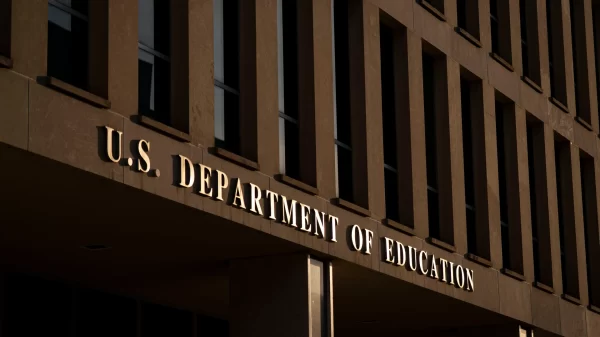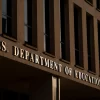I love public education employees. They are the most resourceful group of people you could ever meet. They have to be. These employees work in an atmosphere of politics and nepotism. They suffer through Legislators and administrators that create policies for them even though many of these policy makers have never worked in a school a day in their lives. Because of this, school-based employees have had to learn to MacGyver their way through each and every day.
These employees do this because they know what’s at stake; The future of the 51 million students who attend our public schools as well as the future of our country that one day those students will run.
Recently being made aware of a new piece of federal legislation that could impact the lives of public education employees, I did a quick survey of all my friends that work in that sector. I foundthat a large portion of them are not aware of this new law.
You see, they are working hard trying to ensure that students are fed, that packets of school work are assembled, and that the digital divide, which this pandemic has now thrust into the spotlight, is addressed as best it can be.
They are busy trying to MacGyver their way through a pandemic that education policy does not address, yet they are still expected to somehow provide continuity in teaching and learning.
But at what cost? How much will our students actually benefitfrom these weeks of taped and spliced together hybrids of online and paper and pencil learning, and is that greater than the sacrifices our employees’ may ultimately make?
How much responsibility should school districts share in making sure the most vulnerable in our communities are fed? Under a pandemic and amidst shelter in place orders, at what point do schools step back and local governments and other agencies step up?
I think these are just a few of the questions that are being asked by those in position to educate public school employees about their rights under the new FFCRA, and they just don’t have the answers. So they are saying very little, fearful that what little societal infrastructure public education can provide during this pandemic will fall apart.
Lacking any universal definition of what public education is today and what its responsibilities truly are, public education employees are expected to be and do it all. With a smile on their faces. Because it’s “for the children”. The rest will be sorted out later.
Well, this pandemic has thrust this topic to the forefront. It’s time to sort it out. It’s time to recognize public school employees as employees, not martyrs or miracle workers, or folks with big hearts that are willing to sacrifice it all.
They are employees, and in the United States employees have rights.
In that vain, public education employees, you need to know what your rights are so that you can decide what is right for you and your families.
If you are being asked to work in a building and you feel that you cannot or should not be doing it, if you cannot work (telework included) due to childcare issues, if you or a family member are sick with COVID-19, or you take care of anyone that is in a high risk category, there are now some federal job protections for you.
The Families First Coronavirus Response Act (FFCRA) contains several provisions that will provide meaningful assistance to school district employees. It took effect April 2, 2020, and will end on December 31, 2020.
The FFCRA provides two types of leave for employees impacted by COVID-19: Emergency Paid Sick Leave and Emergency Family Medical Leave Act (FMLA) Leave.
First, let’s talk about the Emergency Paid Sick Leave.
It provides 10 days of paid sick leave to an employee who is unable to work or telework if:
How much it pays:
If an employee is unable to work due to the conditions described in 1-3, the employee is entitled to their regular rate or the applicable minimum wage, whichever is higher, up to $511 per day over a 2-week period.
If an employee is unable to work due to the conditions described in 4 or 6, such as a lack of child care, the employee is entitled to pay at 2/3 their regular rate or 2/3 the applicable minimum wage, whichever is higher, up to $200 per day for 2 weeks.
If an employee is unable to work due to the conditions described in 5 the employee is entitled to pay at 2/3 their regular rate or 2/3 the applicable minimum wage, whichever is higher, up to $200 per day for 12 weeks.
If the employee is part-time, the employee is entitled to be paid for a number of hours equal to the number of hours that the employee works, on average, in a 2 week period.
All full-time and part-time school system employees are covered by the Emergency Paid Sick Leave and are eligible for the two weeks of emergency paid sick leave if they meet one of the six criteria listed above.
Now let’s discuss the Emergency FMLA Leave.
It allows an employee to take up to 12 weeks of leave if the employee is unable to work or telework due to a need for leave to take care of the employee’s child if the school or place of child care has been closed, or if the child care provider is unavailable due to a public health emergency.
How much it pays:
The first 10 days (2 weeks) of leave may be unpaid, except that an employee may choose to use the new emergency sick leave (as identified above) or any other accrued paid leave.
The remaining 10 weeks of FMLA leave provided by this law will be paid at 2/3rds of the employee’s regular rate, up to a maximum payment of $200 per day ($10,000 total).
Emergency FMLA applies to any full-time or part-time employee who have been on the payroll for 30 calendar days.
Another important fact for employees who lack childcare or are caring for an ill child:
Employees in those circumstances can combine both emergency leaves. Here how combining the two may work:
• Weeks 1-2 – Emergency Paid Sick Leave at 67% regular salary up to $200/day
• Weeks 3-12 – Emergency FMLA Leave at 67% regular salary up to $200/day
In the case of lack of childcare, an employee may choose to use accrued leave and emergency paid sick leave together in order to make 100% of his or her salary for that period of time up to two weeks.
Remember it is illegal for an employer to discharge, discipline, or otherwise discriminate against an employee taking leave.
If you feel you need to use one or both emergency leave options, please notify your organization for further guidance. If you are not a member of an organization contact your supervisor to obtain the proper paperwork.
I am not advocating for or against utilizing the FFCRA, but I will say this: IF these MacGyvered forms of distance learning do get shut down due to the fact that public school employeesexercised their legal rights, parents don’t worry, we can make up any time in the classroom that may have been lost.
How?
The easiest and cheapest way to do this would be to end high stakes testing.
Think about it. Most school systems spend weeks after spring break doing test prep and high stakes testing. If schools are able to go back into session in August (which I PRAY is the case!) then they could use the first four weeks to make up what was lost and omit the high stakes testing at the end of the year. This is a slightly altered version of a suggestion made by Dr. Eric Mackey, Alabama’s State Superintendent.
Let’s not aid the destruction of public education by buying into the false narratives that these last few weeks of school arecritical and must continue at all costs, that the sky is falling if we don’t get our children behind a digital device, and that our schools are solely responsible for the care and feeding of our students. Instead let’s recognize how out of focus our vision has become concerning our expectations of public education and public education employees, and let’s begin a discussion asking parents, communities, and community leaders what their responsibilities are when it comes to our children and youth.
Public Ed can come back from this better and stronger, but only if we take action to correct the inequities and misguided policies that this pandemic has thrust onto the National stage.
Finally, to our public school employees, please take this time to care for yourself and your families. We will need you more than ever once our school doors reopen.


















































